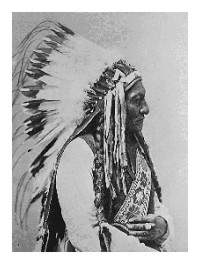Sponsor this page. Your banner or text ad can fill the space above.
Click here to Sponsor the page and how to reserve your ad.
-
Timeline
1881 - Detail
July 4, 1881 - The Tuskegee Institute for black students training to be teachers opens under the tutelage of Booker T. Washington as instructor in Tuskegee, Alabama.

Perhaps we shouldn't be too surprised, but the establishment of the Tuskegee Insitute, a preeminent college university for African Americans was part of a political deal. State Representative Arthur Brooks and State Senator W.F. Foster were in trouble against proposed strong candidates on the other side in their reelection campaign to represent Macon County.
W.F. Foster approached Lewis Adams, a former slave and tradesman in Alabama, with strong ties to the black community, that there was a deal to be made. If Adams would deliver the black vote in the 1880 campaign for the two candidates, Foster would convince the Alabama legislature to found a normal school for African American teachers. The two men agreed on the deal.
The unique part of this story, however, comes from the bipartisan and forgiveness nature of this arrangement. W.F. Foster was a former Confederate colonel, a Democrat. Lewis Adams, the former slave, was a Republican with more constituents of color in the district. So they made a deal, born perhaps of expediency, a measure of forgiveness, and not devoid of impassioned motive. If Foster won, he would follow through on the commitment. And Foster and colleague Brooks did win and they did follow through, although the two thousand dollar yearly appropriation from House Bill 165 was just enough for teacher salaries and not for land and buildings.
Adams and a former slaveholder George W. Campbell believed in the education of black students, but needed more money and a principal. Booker T. Washington, a twenty-five year old teacher of Hampton Institute, was hired, and began teaching in a shanty near the Butler Chapel African Methodist Episcopal Zion Church, where Adams was an elder. The initial class size, thirty. One year later, Washington purchased the initial acreage of the plantation, one hundred acres, that would form the expanding campus in years to come from a $200 loan. Buildings were constructed, many by the students being taught.

Growth of Tuskegee
By the date of the twenty-fifth anniversary of the founding, the Tuskegee Institute had one hundred and fifty-six teachers, one thousand five hundred and ninety students, and owned two thousand three hundred acres. It was an unabashed success. Professors included George Washington Carver, Robert Taylor, and David A. Williston. Booker T. Washington had befriended many in the industrial community to expand its success, including John D. Rockefeller, Andrew Carnegie, and Julius Rosenwald, of Sears and Roebuck fame.
Its influence continued into its second twenty-five years, with the designation by the United States military of Tuskegee in the late 1930's as the flight school for African American pilots for use in World War II. Begun in 1941 at Moton Field four miles from campus, it would become home to the Tuskegee Airmen. By 1965, the school was a national historic landmark. By 1974, the Tuskegee Institute National Historic Site, including Booker T. Washington's home, monument, and a museum was established on the campus. A National Historic Site dedicated to the Tuskegee Airman is also located several miles east at Moton Field.
Today, the Tuskegee Institute is known as Tuskegee University. It provides degrees in forty programs and teaches three thousand one hundred students. The campus has grown to five thousand acres in size with over seventy buildings on site.

More About Lewis Adams
Lewis Adams was born on October, 27, 1842 in Alabama, nineteen years prior to the start of the Civil War. He was born a slave, given no formal education, but apprenticed in his father's plantation service shop, learning the trades. By the time Adams was an adult, he had taught himself to read, write, and speak several languages. After the Civil War ended, Adams opened up his own shop in Tuskegee, and he and his wife Sallie, a mulatto from a nearby plantation, began teaching students in association with the local church, but their effort stalled due to a lack of qualified teachers.
As an educated black man in post-war Alabama, Adams rose to prominence in the African American community, raised sixteen children, and championed the cause of education for his community. By 1880, he had made that deal with W.F. Foster and the Democratic Party, and by July 4, 1881, the Negro Normal School at Tuskegee was founded and open for education. In 1890, Lewis Adams joined the staff at Tuskegee and taught courses on his three trades.
Above photo: History class at the Tuskegee Institute, 1902, Frances Benjamin Johnston. Courtesy Library of Congress. Below: Booker Taliaferro Washington, 1900, Gertrude Kasebler. Courtesy Library of Congress. Info Source: Tuskegee Institute; National Park Service; the African American Registry; Macon County History; Wikipedia Commons.

History Photo Bomb

As an educated black man in post-war Alabama, Adams rose to prominence in the African American community, raised sixteen children, and championed the cause of education for his community. By 1880, he had made that deal with W.F. Foster and the Democratic Party, and by July 4, 1881, the Negro Normal School at Tuskegee was founded and open for education. In 1890, Lewis Adams joined the staff at Tuskegee and taught courses on his three trades.
Above photo: History class at the Tuskegee Institute, 1902, Frances Benjamin Johnston. Courtesy Library of Congress. Below: Booker Taliaferro Washington, 1900, Gertrude Kasebler. Courtesy Library of Congress. Info Source: Tuskegee Institute; National Park Service; the African American Registry; Macon County History; Wikipedia Commons.





